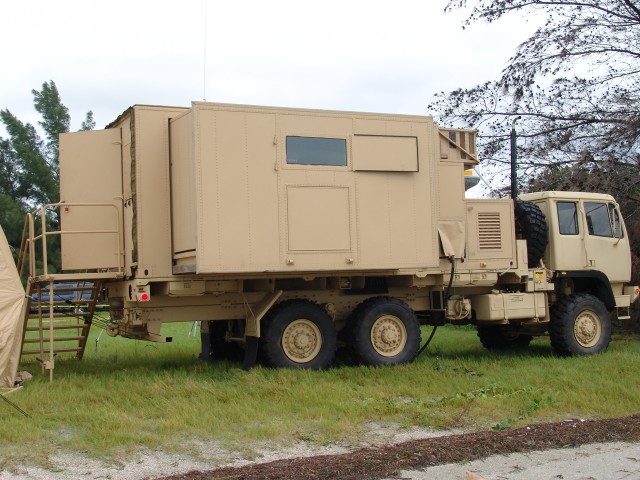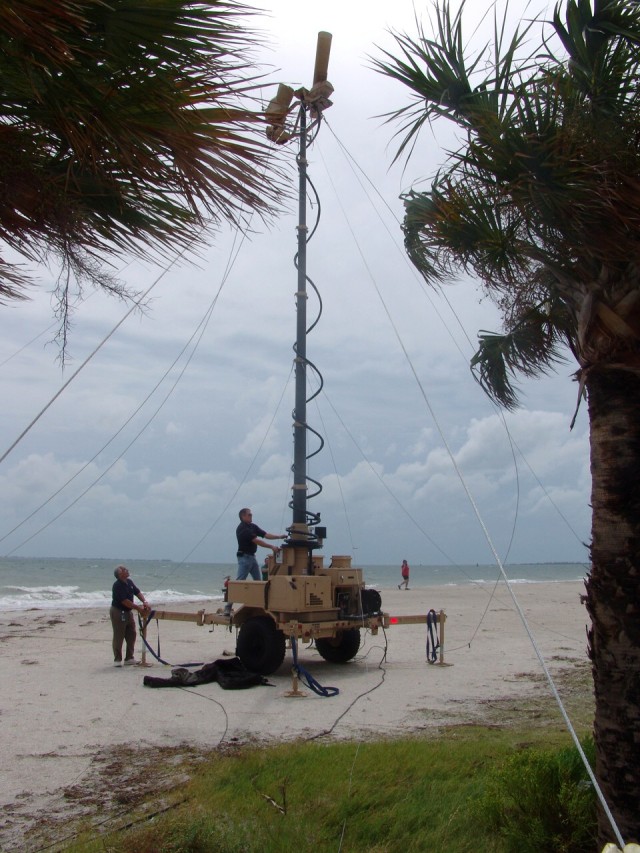As the Army shifts to the materiel enterprise management model, everyone will be required to think as a stakeholder. The individual must consider the bigger picture and collaborate across organizational boundaries to maximize the benefit of every dollar. Nowhere is this holistic approach more vital than in the Army Materiel Command (AMC) where total life cycle management depends on the partnership between the acquisition and research and development (R&D) communities.
In the spirit of this diligent stewardship, the Communications-Electronics Research, Development & Engineering Center's (CERDEC) Command and Control Directorate (C2D) leveraged its congressional plus-up funding to provide the R&D dollars needed by a program of record to move essential technology to the production stage.
"CERDEC doesn't pursue congressional funding, but we do receive it. We never want to spend it for the sake of spending, so we look to produce something that the Army wants," said Joseph Ryan, C2D Quick Reaction & Battle Command Support (QR&BCS) division chief.
Product Manager Command Post Systems and Integration (PdM CPS&I) found itself in a quandary because it had dollars to produce the Harbormaster, a command and control system that would improve Warfighter capabilities when managing harbors, ports and beaches. Unfortunately, the PdM had no R&D funding available.
"You can't get the authority to spend production funds unless you go through the milestone decisions. So as it was, there was no way to develop the project," Ryan said.
According to Ryan, the Harbormaster program looked like a good use for the funding, it happened to be within the scope of the funding and it was an official program of record in the Army.
"We knew that we wouldn't be wasting the funds because in the end, the product would be going to meet an Army requirement that actually has production dollars - thus allowing it to be fielded. It was a win-win situation," said Ryan.
After three years of development, QR&BCS brought the Harbormaster to the required technical readiness level and transitioned the system to the PdM in a ceremony, Feb. 12, at the Aberdeen Test Center, Aberdeen Proving Ground, Md.
"All they have to do now is take the mature technology from us, begin production and start fielding the system to the Warfighter," said Edward Lye, QR&BCS, Battle Command Mechanical Design branch chief.
The upgraded, mobile facility features state-of-the-art technologies that allow it to function as a control tower in theater. Its sensors and communications capabilities provide situational awareness of all vessels and shore logistics, thus allowing the operator to direct shipping or receiving assets.
The mobile system, which is mounted on the back of a M1085A1, five-ton cargo truck, features four work stations where operators have access to radar, primary and secondary camera sensors, commercial internet, the Global Command and Control System, and the Battle Command Sustainment and Support System.
Ryan called the research and planning that went into the three-year-long project "amazing," noting the amount of time and effort that goes into putting a system like this together.
"Just the engineering alone is significant because along with system design, you have to think about power levels, safety, size, weight, mobility, portability and other issues," said Ryan.
QR&BCS designed and developed the power distribution system, the LAN interfaces, the network architectures, the interface to the ground-mounted antennas and SATCOM antennas, the work stations, operator space, the wiring and cords, and the day and night lights. QR&BCS also integrated technology developed by Program Executive Officer Command, Control and Communications Tactical and commercial off-the-shelf (COTS) solutions, said Lye.
"The package the Quick Reaction & Battle Command Support Division has pulled together is absolutely tremendous. Here we have a program, which was created out of the dirt and put together with multiple systems. Now we're handing it to the program manager," said Product Manager Lt. Col. Terry Wilson.
"That's the beauty of CERDEC; when they see there is a gap or a need, they have the ability to appropriately identify opportunities for funding and the funds that they do receive, they have the flexibility to go and do things that a lot of PdMs can't do. Harbormaster is just another example," said Wilson.
"They've reduced our acquisition timeline in being able to deliver capability to the Soldier. It's a clean, efficiently engineered integrated system, which we can continue to tweak and refine to provide a product that's decisive in what these units have to do," said Wilson.
Though QR&BCS has transitioned technologies in the past, Ryan is excited because Harbormaster is the first formal transition initiated by his division.
"It's great to have top-notch electronics, but if we can't get them into Soldiers' hands, they have no value," said Ryan. "This is the way it's supposed to work: research and development centers develop technologies and PdMs produce and field that technology. That's what we're in business for, and the process is working at CERDEC as it was designed to."
For more information on C2D, visit their site on the CERDEC homepage: http://www.cerdec.army.mil/directorates/c2d.asp.








Social Sharing